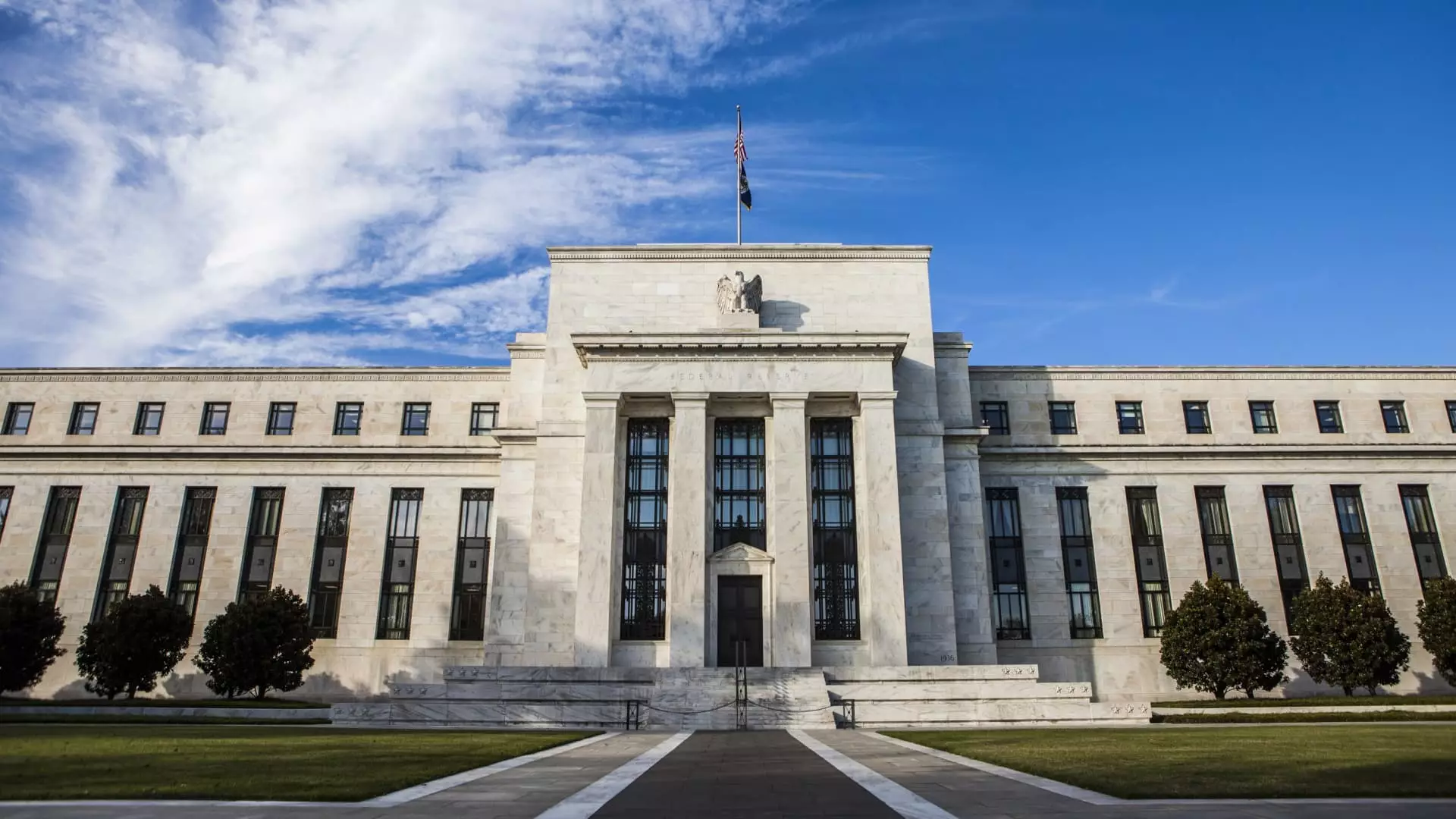Amidst a turbulent economic backdrop, the Federal Reserve is poised to maintain its current interest rate levels at the conclusion of its two-day meeting next week. This decision comes in spite of vocal pressure from political figures, notably former President Donald Trump, who recently expressed a strong desire for immediate interest rate reductions. Trump’s assertion that high interest rates are detrimental to the nation encapsulates a growing public concern about the impact of monetary policy on everyday consumers.
The Fed has indeed been cautious in recalibrating its policies since it raised the benchmark interest rate by a substantial 5.25 percentage points between 2022 and 2023, a move designed to counter persistent inflation. As inflation persists above the central bank’s target of 2%, many consumers are grappling with the dual burden of elevating prices and high borrowing costs. Industry experts warn that those looking for swift intervention from the Fed may need to temper their expectations. According to Matt Schulz, the chief credit analyst at LendingTree, any hopes of an imminent rescue from high interest rates will likely lead to disappointment.
The Borrowing Landscape: How Fed Policies Affect Consumers
The Federal Funds Rate, the central bank’s benchmark for overnight lending between banks, significantly influences overall borrowing and savings rates in the economy. While consumers do not pay this rate directly, it plays a crucial role in determining the interest rates on loans, including mortgages, credit cards, and auto loans. When the Fed eventually takes steps to lower the funds rate, it is anticipated that consumers will see a subsequent reduction in borrowing costs, making it more affordable to take out loans.
However, current trends suggest that consumers may not see immediate relief. Interest rates on credit cards, which are often tied to the Fed’s benchmark, continue to hover around alarming highs exceeding 20%, according to Bankrate. This situation has led to an increase in delinquencies and a rising proportion of debtors who are only managing to make minimum payments—a trend that has not been observed at such levels for over a decade. Greg McBride, Bankrate’s chief financial analyst, highlights the slow reaction of credit card issuers to rate cuts compared to rate increases, which compounds the financial strain on consumers.
Mortgage Rates and their Stability
Mortgage rates present another dimension in the discussion of consumer borrowing. While the Fed has lowered its rates recently, mortgage rates have not mirrored these changes, with the average rate for a 30-year fixed mortgage reaching around 7.06%. The link between mortgage rates and Treasury yields indicates that fixed mortgage debt is relatively insulated from immediate shifts in the Fed’s policy. As most homeowners are locked into fixed-rate mortgages, they remain unaffected unless they choose to refinance or move.
This persistent high-rate environment poses a considerable challenge for potential homebuyers. With many existing homeowners retaining low fixed rates, the real estate market faces stagnation, as those looking to purchase may be deterred by affordability concerns. Bankrate’s McBride emphasizes that existing mortgage debt configuration does not help new buyers, effectively sidelining many prospective homeowners in an already competitive market.
Auto loans represent one of the fastest-growing segments of consumer credit and are indicative of ongoing affordability challenges. Rising car prices have contributed to escalating loan payments, pushing total auto loan balances beyond an unsustainable $1.64 trillion in the U.S. Given the current average rate of approximately 7.47% on a new five-year car loan, many buyers are feeling the pinch with every monthly payment.
Joseph Yoon from Edmunds articulates that unless the Fed signals significant future cuts, affordability issues for vehicle buyers are likely to persist. Strained budgets from continuously climbing new vehicle prices make it challenging for consumers to anticipate any notable relief ahead.
Moreover, Federal student loan rates have also seen rises, with new undergraduate borrowers for the academic year 2024-25 facing a rate of 6.53%, a significant uptick from the previous year. This fixed rate implicates that immediate impacts from Fed adjustments are limited; however, private student loans, which often have variable rates, are likely to increase in tandem with wider economic shifts.
On the horizon, a silver lining exists for savers, as high-yield savings accounts have begun providing attractive returns in the wake of the Fed’s rate hikes. These inflation-beating yields mark a positive trend for consumers looking to build their savings. However, while savers may benefit from these conditions, the broader narrative of rising debt remains a pressing concern for many households navigating a complex financial landscape.
As the Federal Reserve navigates its path forward, the interplay between its policies and consumer impacts will remain a critical focus. The necessity for a careful, measured approach to interest rates remains paramount in an economy that is still grappling with the aftermath of significant policy shifts.


Leave a Reply